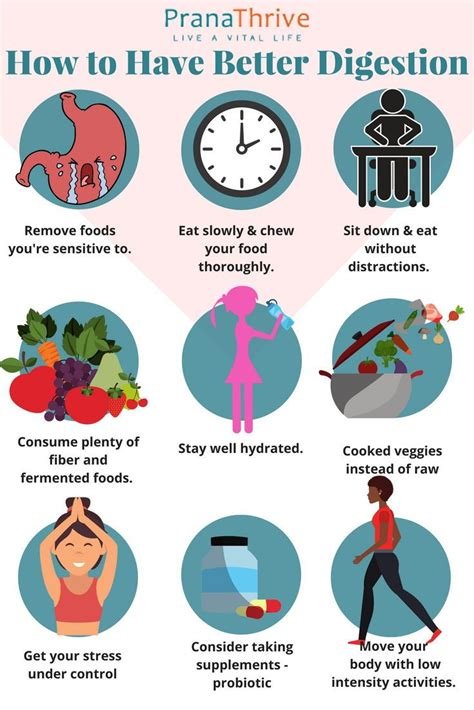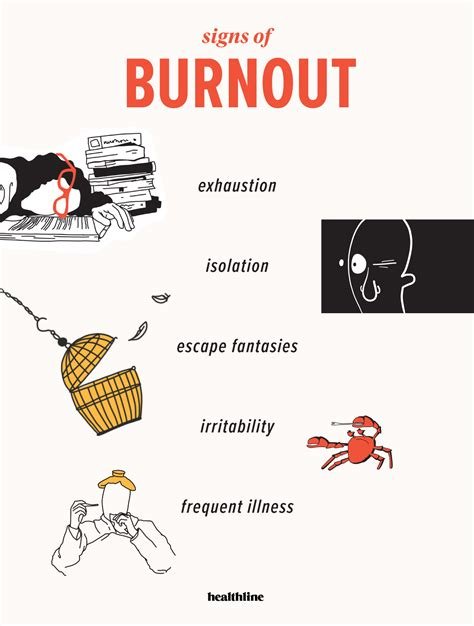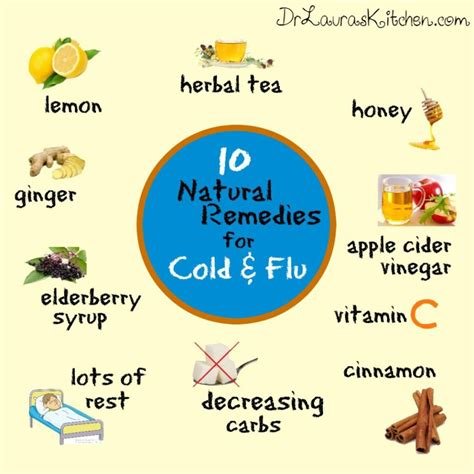Decoding food labels is essential for making healthier choices in today’s food landscape. This article emphasizes the significance of understanding food labels, guiding readers on how to interpret nutritional information and ingredient lists to identify hidden additives. It stresses the importance of serving sizes and portion control, helping consumers to avoid common misleading food claims that can detract from a healthy diet. With practical tips for healthier eating, the article empowers readers to analyze the impact of food labels on their diets, promoting informed decisions at the grocery store. By mastering the art of decoding food labels, individuals can enhance their nutrition and overall wellness, making choices that align with their health goals.
Understanding The Importance Of Food Labels
Food labels are more than just a regulatory requirement; they serve as a vital tool for consumers in making informed dietary choices. Understanding decoding food labels can empower individuals to select products that align with their health goals. Knowing how to properly interpret these labels can lead to substantial improvements in your diet and overall wellbeing.
When we take the time to examine food labels, we gain insight into what we’re actually consuming. This not only includes the nutritional value but also potential allergens and ingredients that may not be beneficial for our health. By scrutinizing food labels, consumers can identify products that offer true health benefits versus those laden with unhealthy additives.
- Key Benefits of Reading Food Labels
- Informed choice making regarding nutrient intake
- Awareness of serving sizes to manage portion control
- Identification of added sugars and unhealthy fats
- Detection of allergens and dietary restrictions
- Comparison between similar products for better decisions
- Understanding product claims to avoid misleading information
Moreover, learning how to navigate food labels enhances one’s ability to plan meals and snacks more effectively. This skill can contribute to better overall nutrition by ensuring that you are incorporating a variety of essential nutrients into your diet. As people become more health-conscious, the ability to thoroughly evaluate and understand what’s on a food label becomes increasingly significant.
Adopting the habit of reading food labels is a game changer for anyone looking to improve their health and nutrition.
By prioritizing the practice of decoding food labels, consumers can take significant strides toward a healthier lifestyle. It fosters an understanding of the relationship between food choices and health outcomes, ultimately leading to improved dietary habits. As you become more adept at interpreting these labels, you elevate your ability to support your health and well-being more effectively.
Decoding Food Labels: Essential Information You Need
Understanding food labels is crucial when it comes to making informed dietary choices. In today’s market, with a plethora of options available, it is increasingly important to develop skills in decoding food labels effectively. Food labels provide essential information that can significantly affect your health and wellness. By knowing what to look for, you can avoid hidden additives and make healthier selections in the grocery store.
One of the first steps in decoding food labels is to familiarize yourself with the different components displayed. Food labels typically include a nutrition facts panel, an ingredient list, serving sizes, and various claims about the product. Understanding these elements is vital for discerning whether a product matches your dietary needs. Paying close attention to the order of ingredients, for example, can reveal a lot about the product’s true nature.
Steps To Properly Decipher Food Labels
- Check the serving size to understand what the nutritional information applies to.
- Examine the calorie count to manage your daily caloric intake.
- Look at the macronutrient breakdown, focusing on protein, fats, and carbohydrates.
- Pay attention to added sugars, salts, and unhealthy fats like trans fats.
- Review the ingredient list for any hidden additives or allergens.
- Be aware of health claims such as organic or natural, which may not always indicate quality.
- Consider the overall fiber and nutrient content for a more balanced choice.
Each of these steps is integral to decoding food labels effectively. Product claims can sometimes be misleading, making it vital for consumers to engage in critical analysis. For instance, a label might prominently display low-fat while hiding high sugar content that can negate health benefits. Paying attention to these subtleties enables you to make informed decisions about what goes into your body.
In conclusion, mastering the art of decoding food labels is an empowering skill that enhances your ability to make smart dietary choices. The knowledge gained from scrutinizing food labels can help you avoid processed foods laden with unhealthy ingredients and guide you towards healthier options. Embracing this practice will ultimately contribute positively to your overall health and well-being.
Nutritional Information: What To Look For
When you’re decoding food labels, understanding the nutritional information is crucial for making informed food choices. Nutritional labels can provide a wealth of information, but deciphering this data can be overwhelming for many consumers. It is essential to focus on key components that significantly impact your overall health and dietary goals.
Among the various elements listed on a food label, caloric content, macronutrient breakdown, and vitamins and minerals are essential to consider. Look for servings per container to understand how these factors contribute to your daily intake. By honing in on these specifics, you can better manage your dietary choices and nutritional needs, enabling a healthier lifestyle.
- Calories: Track your total caloric intake based on your dietary goals.
- Protein: Important for muscle maintenance and overall bodily functions.
- Carbohydrates: Essential for energy; focus on whole grains and fibers.
- Sugars: Limit added sugars to maintain balanced energy levels.
- Fats: Understand the types of fats you consume.
- Sodium: Monitor salt intake to support cardiovascular health.
- Vitamins and Minerals: Aim for a variety of nutrients to support overall well-being.
When you know what to look for, interpreting nutritional labels can become more manageable. Keeping an eye on the key nutrients mentioned above will guide you in choosing better food options. This awareness allows you to nourish your body and supports a balanced diet.
Understanding Protein Content
Protein plays a critical role in maintaining muscle mass, repairing tissues, and supporting various bodily functions. When decoding food labels, examine the protein content listed on the label. Aim for foods that offer a high protein-to-calorie ratio, which ensures you’re getting enough protein without consuming excess calories. Consider lean sources of protein, such as chicken, fish, legumes, and low-fat dairy, to achieve healthful outcomes.
Discerning Fats Types
Fats can be both beneficial and harmful, depending on their type. It’s crucial to differentiate between saturated, unsaturated, and trans fats when looking at nutritional labels. Aim to minimize your intake of saturated and trans fats, which can elevate the risk of heart disease. Instead, seek out unsaturated fats found in olive oil, avocados, and nuts, which can be heart-healthy and nutrient-dense.
Ingredient Lists: Identifying Hidden Additives
When it comes to decoding food labels, understanding ingredient lists is crucial for making healthier choices. Many products contain additives that are not readily apparent or may be disguised under ambiguous names. By familiarizing yourself with common additives and their purposes, you can avoid unwanted ingredients in your diet. This awareness can ultimately lead to better health outcomes and a more informed approach to food consumption.
To effectively navigate ingredient lists, it’s essential to know which components to scrutinize. Often, the first few ingredients listed make up the bulk of the product, so start by assessing those. Be particularly cautious with items that contain high-fructose corn syrup, artificial colors, and preservatives, as these can have negative health effects when consumed frequently. Moreover, recognizing allergens or additives that you personally wish to avoid is paramount.
- Steps To Analyze Ingredient Lists
- Start with the first three ingredients, as they represent the primary components.
- Check for added sugars, especially those that are not immediately recognizable.
- Avoid ingredients with unpronounceable names; these may be synthetic additives.
- Look for common allergens like dairy, nuts, or gluten if you have sensitivities.
- Research any unfamiliar ingredients online to learn their effects.
- Be wary of natural flavors, as they can still be artificially derived.
- Consider the overall length of the ingredient list; shorter is often better.
By following these steps when examining ingredient lists, you empower yourself to make better dietary decisions. Not only does this enhance your understanding of what you are consuming, but it also helps you build healthier habits over time. Remember, always trust your instincts when something seems off; if a product has too many dubious ingredients, it’s likely best to reconsider your choice.
“Knowledge is power, especially when it comes to understanding what you eat. Take the time to dissect ingredient lists for a healthier future.”
Understanding Serving Sizes And Portions
When it comes to making healthier choices, understanding serving sizes and portions is crucial. Many people often underestimate or overestimate the amount of food they consume, leading to unintended consequences for their health and wellbeing. By focusing on decoding food labels, individuals can make choices that align with their dietary needs, while also promoting overall wellness.
Serving size information found on food labels is designed to help consumers better gauge their food consumption. It’s important to remember that a serving size is not necessarily a recommendation for how much you should eat; rather, it serves as a standard measurement for nutritional information. This means carefully examining serving sizes can play a significant role in maintaining a balanced diet.
- Standard recommendations from dietary guidelines
- Caloric density of the food
- Individual nutritional needs based on age, gender, and activity level
- Food group classifications (e.g., fruits, vegetables, grains)
- Trends in portion sizes in restaurants and packaged foods
- Personal eating patterns and habits
To better navigate the complexities of serving sizes, it can be helpful to use measuring tools such as cups and scales. Many individuals find that visually estimating serving sizes often leads to miscalculations. Instead, learning to recognize standard serving sizes through consistent practice can greatly aid in achieving dietary goals. As you begin to make sense of food labels, keep in mind that being aware of portion control can lead to healthier eating habits in the long run.
By emphasizing the importance of serving sizes and actively engaging with food labels, you can take control of your dietary choices and ensure a healthier lifestyle.
Common Misleading Food Claims To Avoid
In the quest for healthier eating, decoding food labels is essential, particularly when it comes to understanding misleading claims. Many food products boast labels that can easily mislead consumers into thinking they are making a better choice. It’s crucial to be informed about these claims to avoid falling into the trap of marketing strategies that prioritize sales over actual health benefits.
One common mistake is assuming that products labeled as natural are inherently healthy. This term is not tightly regulated, which can lead to confusion. Similarly, terms such as sugar-free or low-fat can mislead consumers into believing that a product is nutritionally sound, while it may contain artificial sweeteners or high levels of preservatives instead. Being aware of these misleading labels is vital in making informed food choices.
Types of Misleading Claims
- All-natural without clear definitions
- Sugar-free that compensates with artificial sweeteners
- Low-fat products packed with sugars
- High in fiber that includes unhealthy fillers
- Gluten-free which may still be high in calories
- Organic with minimal nutritional value
- Fortified that masks deficiencies in the product
Knowing these misleading claims will empower you to look beyond the labels and consider actual ingredients. Always check the nutrition facts and ingredient list for a clearer idea of what you are consuming. It’s not just enough to glance at the front of the package; delving into the details is imperative for maintaining a healthy diet. By adopting this approach, you can take more control over your eating habits and eventually make choices that align with your health goals.
Tips For Making Healthier Choices
Choosing healthier food options is increasingly important in today’s fast-paced world where processed foods dominate grocery shelves. Decoding Food labels can empower you to make informed decisions that benefit your overall well-being. Understanding what these labels mean is an essential skill for anyone looking to enhance their diet and improve their health. By paying attention to the nutritional information and ingredients, you can significantly affect your dietary choices.
One effective way to begin your journey to better eating habits is by familiarizing yourself with the key components of food labels. This knowledge allows you to quickly identify nutritious options and avoid unhealthy choices that often come disguised as health food. Additionally, engaging with the information on these labels opens the door to discussions about sustainable eating practices and the impact of food production on our environment.
Practical Tips For Healthier Eating
- Always check the serving size before consuming any product.
- Look for items with lower added sugars and sodium levels.
- Prioritize whole food ingredients over processed ones.
- Choose items labeled whole grain over enriched or refined options.
- Aim for foods with a higher percentage of daily values for fiber and vitamins.
- Be cautious of labels that claim to be “fat-free” or “sugar-free”; they often compensate with other additives.
- Read through the ingredient list to spot any artificial preservatives or coloring agents.
It’s important to understand that making healthier choices doesn’t have to be overwhelming. By integrating small, manageable changes into your grocery shopping routine and mealtime practices, you can slowly shift toward a better diet. Furthermore, the focus should be not only on the quantity of food consumed but also on the quality of the ingredients. Remember, the ultimate goal is to cultivate a balanced way of eating that can be sustained in the long term.
Empower yourself with knowledge! Decoding food labels puts you in control of your dietary choices, enabling you to strategically choose foods that align with your health goals.
As you continue to practice decoding food labels, you will develop a deeper understanding of what you’re putting into your body. This newfound awareness not only influences your personal health but can also inspire those around you to reevaluate their food choices. With commitment and mindfulness, healthier eating can become an integral part of your lifestyle.
Analyze The Impact Of Food Labels On Diet
Understanding how food labels affect dietary choices is crucial for making informed decisions about nutrition. Many people underestimate the significance of decoding food labels, which can greatly influence their overall health. Food labels provide essential information that helps consumers assess the nutritional value of a product, identify harmful ingredients, and ultimately steer them towards healthier eating habits. By learning to interpret food labels effectively, individuals can improve their dietary quality.
Furthermore, food labels serve as a guide, enabling consumers to compare various products easily. When shopping, many shoppers are overwhelmed by the variety of options available, leading to impulsive purchases. However, having a systematic approach to reading food labels can help mitigate confusion and support healthier choices. This approach not only involves looking at nutritional facts but also gauging ingredients, serving sizes, and common claims often found on packaging.
Steps To Evaluate Dietary Changes:
- Assess your current eating habits and identify areas for improvement.
- Familiarize yourself with the nutritional information found on food labels.
- Look for foods that offer higher volumes of beneficial ingredients such as fiber and protein.
- Be cautious of added sugars and trans fats, which can adversely affect your health.
- Check serving sizes to ensure portion control in your diet.
- Compare ingredient lists to avoid hidden additives and preservatives.
- Regularly revisit and adjust your dietary choices based on ongoing evaluations.
In addition to ensuring that you are making healthier food choices, literacy in food labels can also empower you to challenge misleading claims often found in marketing. It’s essential to recognize that phrases like “low-fat” or “natural” don’t always equate to healthier options. Many products advertised as healthy may still contain undesirable amounts of sodium, sugars, or unhealthy fats. Ultimately, by becoming adept at decoding food labels, consumers can navigate the vast array of products more confidently and select options that align with their health goals.
Conclusion: Empower Yourself For Better Choices
In the journey of decoding food labels, the ultimate goal is to empower yourself to make informed dietary choices. By comprehensively understanding the information provided on food labels, you enhance your ability to opt for healthier food alternatives. This knowledge equips you to navigate the supermarket more confidently, ultimately giving you control over what you consume. Employing the skills learned in this guide can significantly influence your health and well-being.
Taking the time to read and understand food labels can have profound effects on your dietary habits. It becomes much easier to prevent unhealthy choices when you are aware of the ingredients and claims made by various products. This not only aids in managing weight but also helps in reducing the risk of chronic diseases that can arise from poor dietary choices. Knowledge is indeed power, and in the case of food labels, it is the key to unlocking a healthier lifestyle.
Actionable Takeaways From This Guide
- Always read the entire food label, including serving sizes and nutritional information.
- Pay close attention to the ingredient list for hidden additives or unhealthy components.
- Avoid products with misleading claims or excessive sugar, sodium, and unhealthy fats.
- Educate yourself about standard serving sizes to avoid overeating.
- Focus on whole foods with minimal ingredients for better health outcomes.
- Make a shopping list that prioritizes healthy brands based on label assessment.
- Stay updated with current nutritional guidelines to refine your label-reading skills.
Ultimately, mastering the art of decoding food labels offers a pathway toward healthier living. As you incorporate these practices into your daily routine, you will find that making healthier choices becomes increasingly instinctual. Maintain a proactive approach to your diet, regularly reassessing the food you choose, and consider seeking help from nutritionists if necessary. Remember, every small choice you make contributes to your overall health, paving the way for a vibrant and nourished life.









